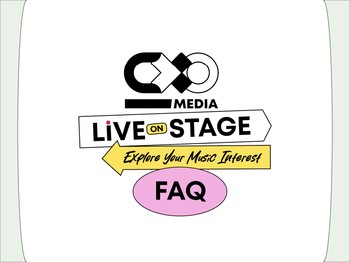For hundreds of years, murals have been an important element of our culture. History of murals in Indonesia can be traced to its presence through a large scribble on the train during the 1945-1949 revolution period, "Merdeka Ataoe Mati," as a commemoration of the arrival of the NICA troops. Murals are now a means of expression for artists working in a variety of graphic styles and have recently become communal focal points in many parts of the world, bringing people together to celebrate their tradition and history, as well as fostering deeper conversations.
Murals, community, and activism
Any piece of artwork painted or put directly on a wall, ceiling, or other permanent substrate-usually vertically-is referred to as a mural. Murals serve as a reminder and collective thought space. Through what they depict, people can start a conversation about a topic or a community issue that has happened or still happens. A reminder for the community to hold a conversation, which is a conversation of stories and a conversation of languages.
Mural artists are contemporary visual historians. They aim to capture what is going on currently. Their murals allow them to call for more artists to utilize their work to send messages and discuss issues that they are facing in society. Whaling Walls, by American artist Wyland, is an excellent example of a dialogue-provoking mural piece. Wyland painted 100 life-size whale murals throughout the world over the course of 30 years to help people appreciate our seas via art. Some of these works were painted on buildings in British Columbia and Ontario.
Many NGOs incorporate creative activism as a part of their mission through art, including murals. They try to harness the power of art and creativity to inspire people to take action, join their cause, and share their vision on several issues-ranging from social to environmental. One example comes from Greenpeace, where they held The Hope through Action 'GreenPieces' global mural project. It's an illustration of how the power of community and street art can help inspire individuals to join the movement of environmental issues. Expressions of protest through murals were carried out in Hong Kong, when in 2018 residents used murals as a campaign tool to support the preservation of village areas. They drew murals in the area of Ping Yeung San Tsuen Village. Through the mural, the residents forced the bulldozers who wanted to flatten their village to back down. The mural became a symbol of peaceful resistance. In The USA, artists are letting their brushes speak of racial reckoning while thousands of Americans offer their voices to protests during 'Black Lives Matter'. They're spray-painting the phrase "Black Lives Matter" on the streets. They draw fists, flowers, and faces, then post them on social media. It became their response to a creative drive sparked by the loss of George Floyd and the global pandemic.
During the pandemic, when residents were asked not to gather together, including expressing their protest, the mural became a "safe and peaceful" expression for them to convey a message or criticism.
Mural activism in Indonesia
In Indonesia, the emergence of murals can be found at least since the revolutionary period. These murals can be found on the city walls, such as writings on train cars that contain calls for propaganda efforts to support independence. Strikingly, this art of protest covered the city walls that were ravaged by the war that raged during the action against the Dutch. Then, re-interest in murals cannot find the context of the collapse of the New Order, which ruled Indonesia for approximately 32 years.
Since the end of the New Order, which began the early period of politics and freedom of speech, various individuals and groups have emerged who have responded to the era carried out through murals. Many Indonesian artists use murals to promote social & environmental awareness. They are doing so to learn more about the country's wider social, political, and historical processes as well as injustices. Mural artists in Indonesia are proving to be a powerful force for change, proposing new socio-political solutions. One example is Komunitas Pojok. It held the seventh Bali Binal entitled "River Relief". This festival event opens the widest possible participation space for the general public and artists to be involved. Freedom is given as wide as possible, through various forms and mediums respectively. The locations of the murals chosen by the artists also varied: the walls of the bridge, old uninhabited houses, to the walls along the banks of the river.
Setu Legi (b. 1971), another well-known artist, has created a series of pieces that especially address the negative environmental and socioeconomic effects of oil palm plantation in West Papua. Monokultur (2014), a wall-to-wall and floor-to-ceiling mural partially covered by a sequence of acrylic paintings, is one example. The replacement of West Papua's natural, rich biodiversity is symbolized by human skulls on a freshly built roadway. The painting contains banners with the old New Order slogans Gemah ripah loh jinawi (Extremely wealthy and very fruitful) and Toto tentrem karto raharjo (Order and prosperity), emphasizing the disconnect between goals and reality of environmental and socio-cultural degradation.
The greater worth of murals resides in the discussions we have, the connections we make, and the legacy of relationships we establish along the way as a community. It frequently yields transformative outcomes. The experience of art pushes us from the mundane into the world of possibility.



